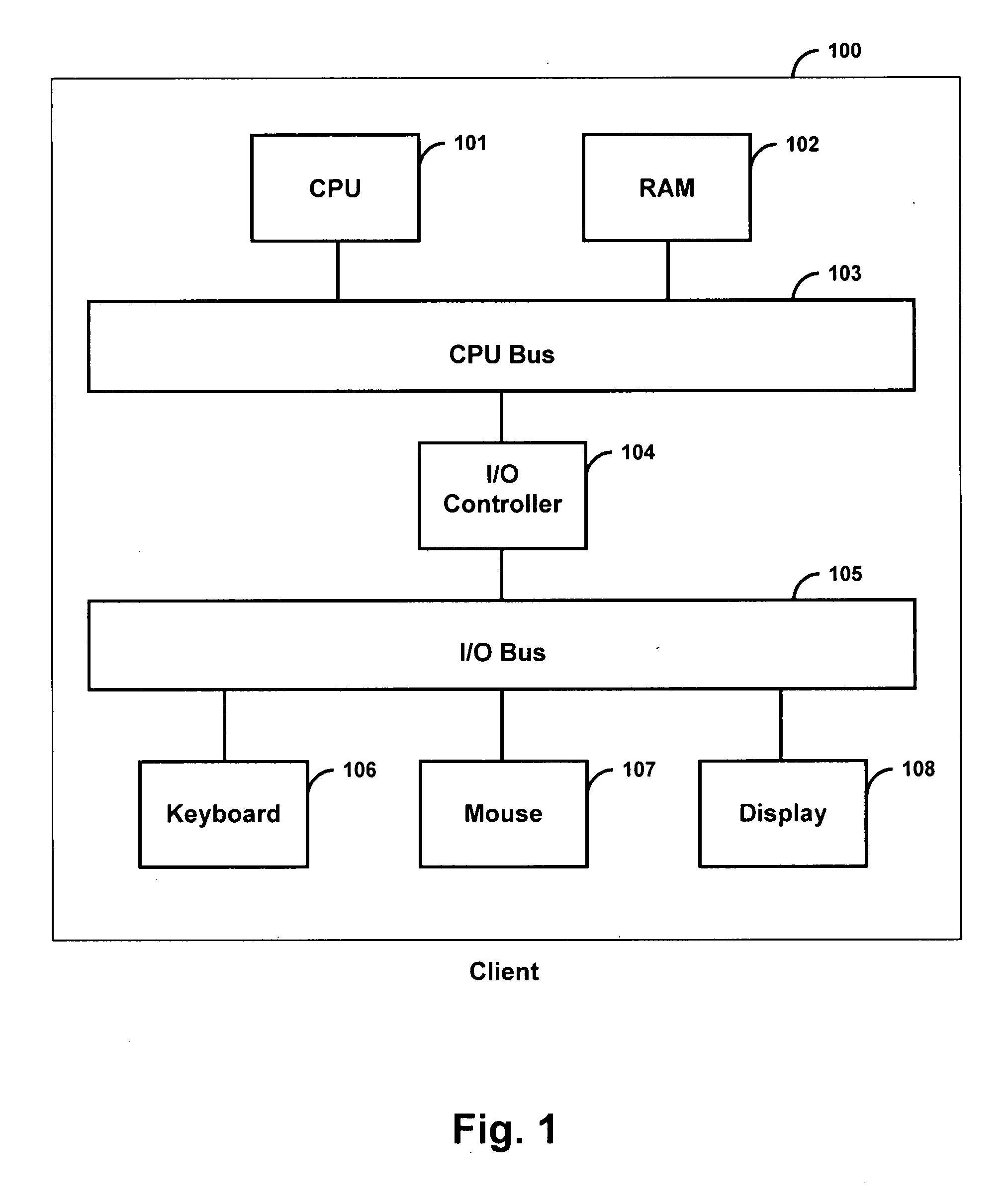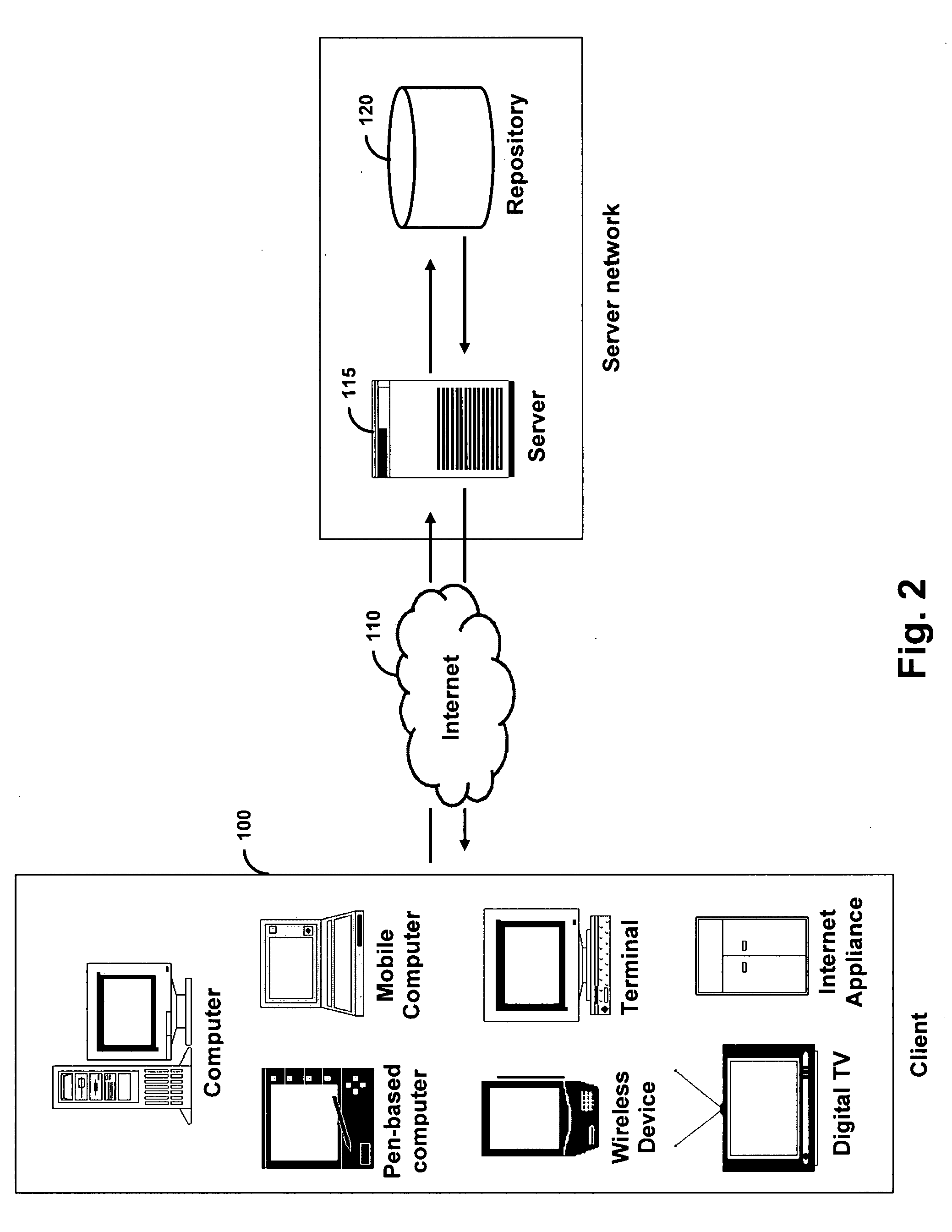Method and system for ontology modeling based on the exchange of annotations
a technology of annotations and ontology, applied in the field of ontology modeling based on annotation exchange, can solve the problems of limited, if any, domain specific information being captured, and the use of context and domain semantics is minimal, so as to improve the value of content ownership, advertisement space (impressions), and advertisement charges
- Summary
- Abstract
- Description
- Claims
- Application Information
AI Technical Summary
Benefits of technology
Problems solved by technology
Method used
Image
Examples
Embodiment Construction
[0063]A preferred embodiment of the invention is now described in detail. Referring to the drawings, like numbers indicate like parts throughout the views. As used in the description herein and throughout the claims that follow, the meaning of “a”, “an”, and “the” includes plural reference unless the context clearly dictates otherwise. Also, as used in the description herein and throughout the claims that follow, the meaning of “in” includes “in” and “on” unless the context clearly dictates otherwise. In the foregoing discussion, the following terms will have the following definitions unless the context clearly dictates otherwise.[0064]Actors: something or someone who supplies a stimulus to the system. For example: user, software agent, application, etc.[0065]Agent: a piece of software that acts for a user or other program in a relationship of agency. Such “action on behalf of” implies the authority to decide when (and if) action is appropriate. The idea is that agents are not stric...
PUM
 Login to View More
Login to View More Abstract
Description
Claims
Application Information
 Login to View More
Login to View More - R&D
- Intellectual Property
- Life Sciences
- Materials
- Tech Scout
- Unparalleled Data Quality
- Higher Quality Content
- 60% Fewer Hallucinations
Browse by: Latest US Patents, China's latest patents, Technical Efficacy Thesaurus, Application Domain, Technology Topic, Popular Technical Reports.
© 2025 PatSnap. All rights reserved.Legal|Privacy policy|Modern Slavery Act Transparency Statement|Sitemap|About US| Contact US: help@patsnap.com



